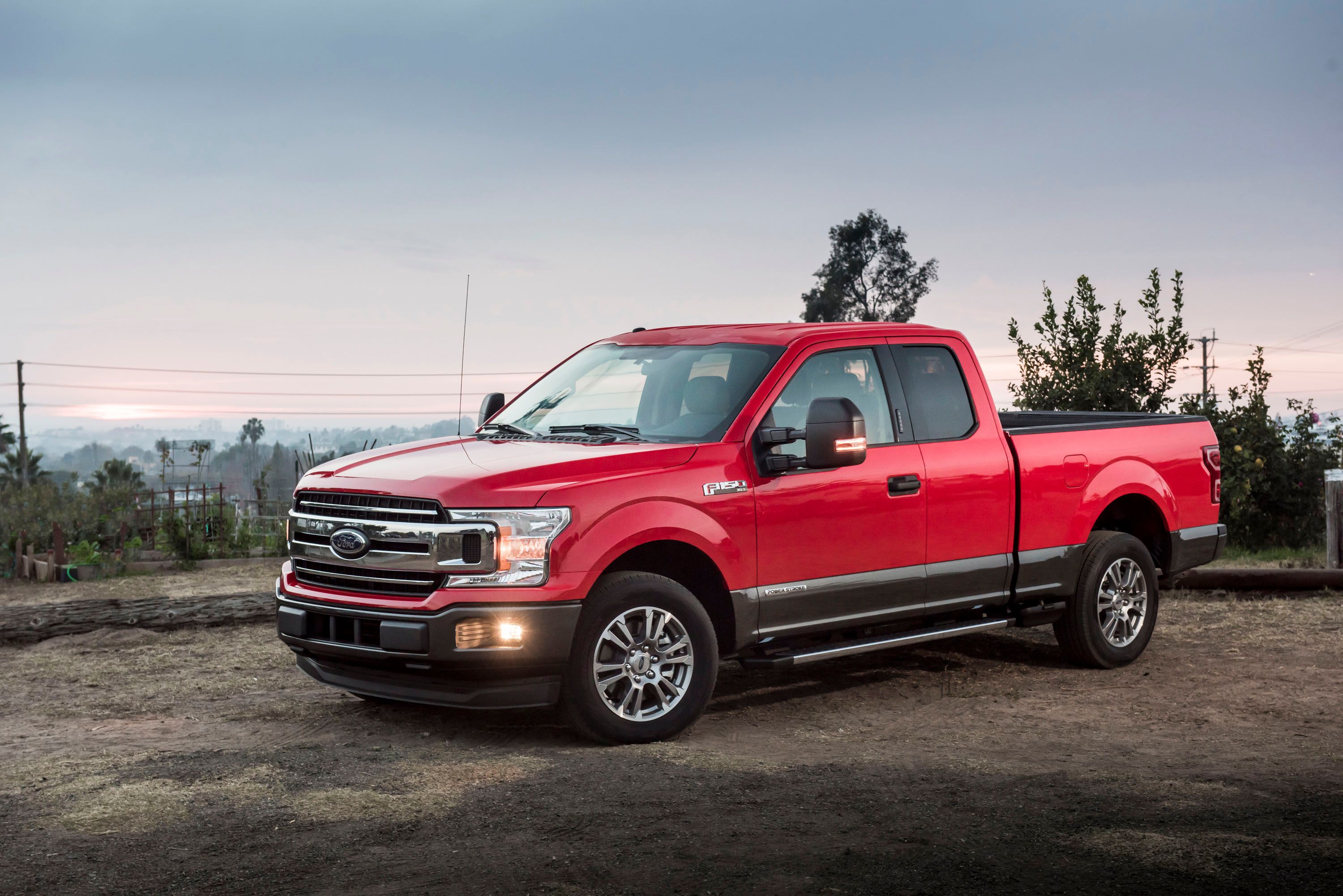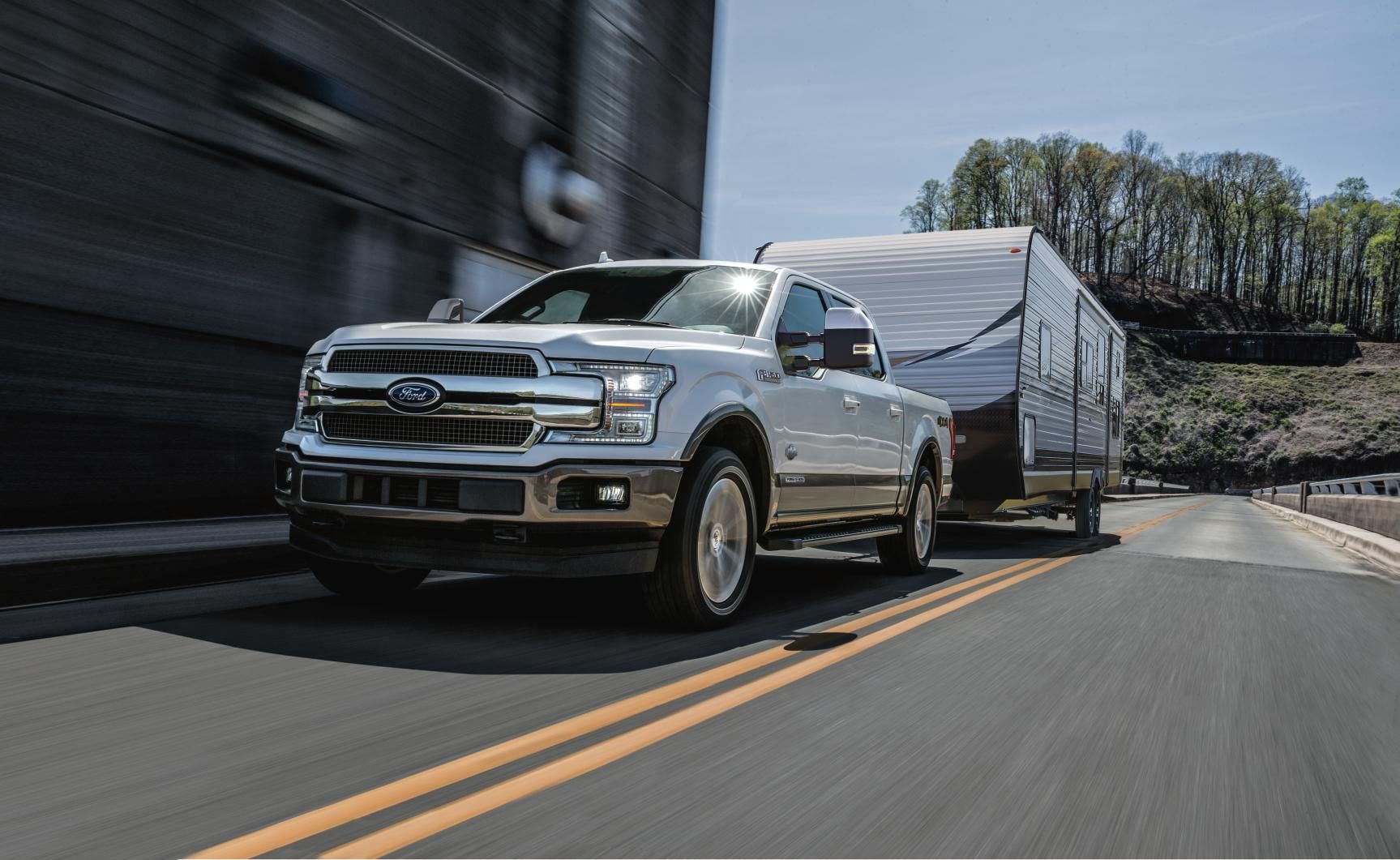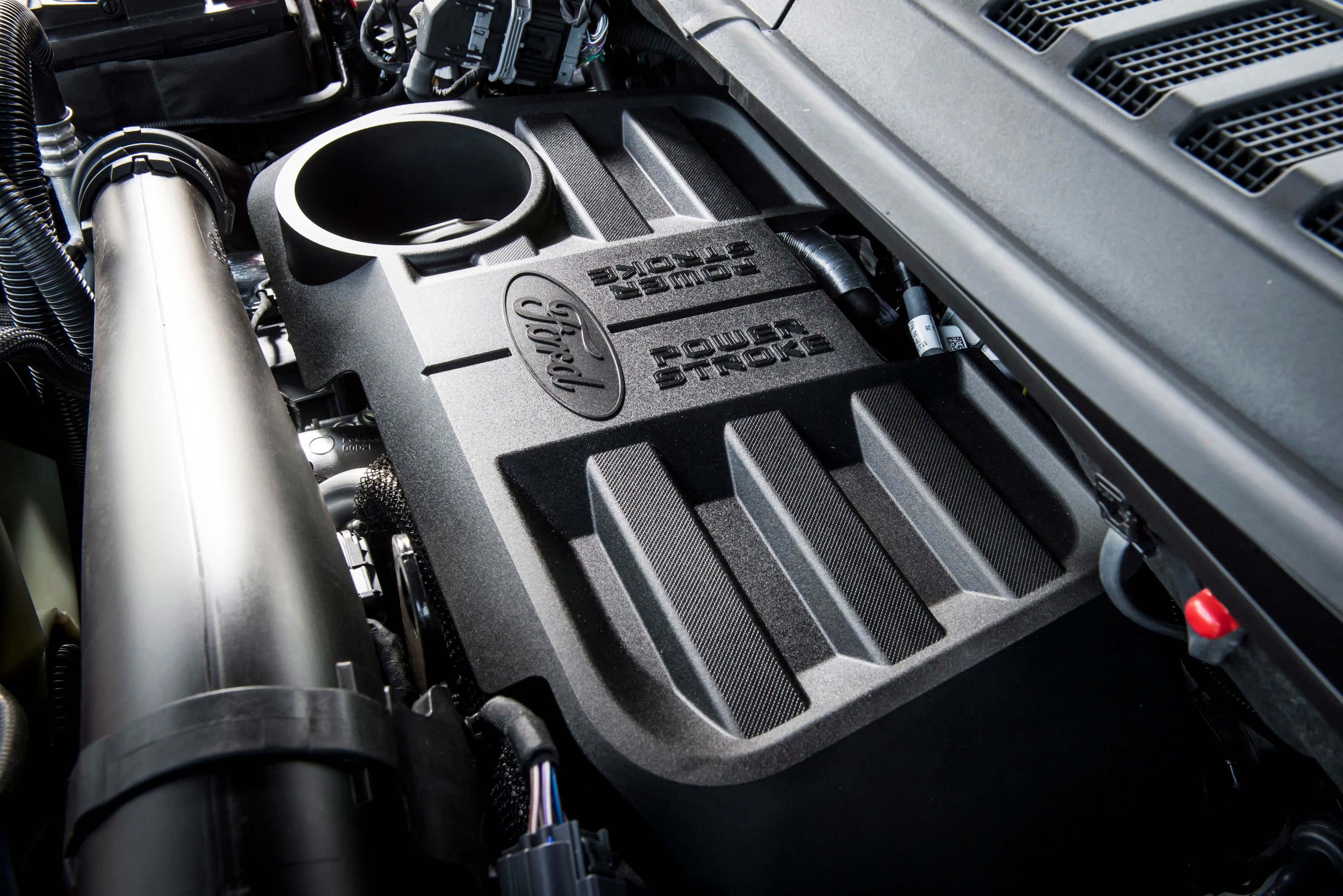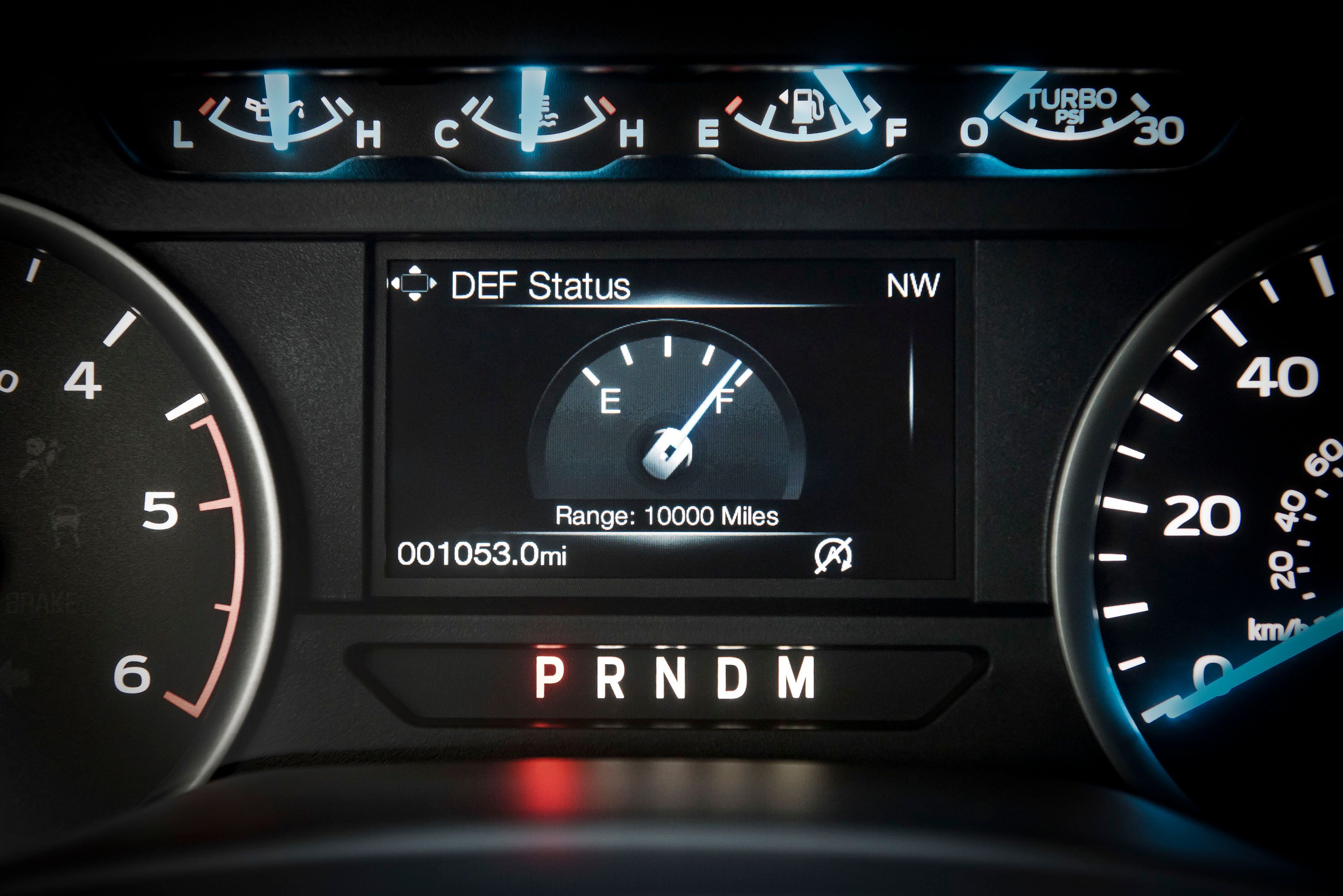Ford has finally pulled the wraps off its long-awaited 3.0-liter Power Stroke V-6 turbodiesel for the 2018 F-150. The engine will compete directly with the Ram 1500’s 3.0-liter EcoDiesel V-6 and General Motors’ upcoming light-duty turbodiesel anticipated for the all-new 2019 Chevrolet Silverado and GMC Sierra. The addition of the Power Stroke to the F-150 lineup means six engines to choose from.
The 3.0-liter Power Stroke V-6 makes an impressive 250 horsepower and 440 pound-feet of torque, with torque peaking at just 1,750 rpm. The engine comes mated to Ford’s 10-speed automatic with a unique calibration for diesel use. With the right truck configuration, Ford says the Power Stroke will tow 11,400 pounds and haul 2,020 pounds in the bed. That’s a full 2,190 pounds more than the Ram 1500 EcoDiesel is able to tow, and 420 pounds more than the Ram can haul. Naturally, Ford is also looking to beat Ram at fuel economy, too. Ford is shooting for 30 mpg on the highway – beating the Ram by one mpg. Only the EPA’s testing will validate Ford’s engineering.
Continue reading for more information on the 2018 F-150 Power Stroke.
The First Turbodiesel in F-150 History
The 3.0-liter Power Stroke V-6 turbodiesel is full of technical achievements. The engine block is cast from compact-graphite iron – the same material Ford uses in the heavy-duty 6.7-liter Power Stroke V-8 found in the Super Duty lineup, as well as the 2.7-liter EcoBoost V-6 in the F-150. Its crankshaft is made from forged steel for added strength and its oil pan is made from cast aluminum for added lightness.
The turbocharger is of the variable-geometry type, which boasts reduced turbo lag and the common-rail fuel system uses high-pressure injectors squirting fuel into the cylinders at 29,000 psi. But that caliber of engineering is basically commonplace in modern turbodiesel. Not common is Ford’s choice of engine fan.
The 3.0-liter Power Stroke uses an old-school viscous-controlled mechanical fan rather than an electric fan. Ford says this moves more air through the radiator and prevents higher coolant temperatures, which would lead to the engine’s computer dialing back power. Electric fans have become widely used because of their efficiency thanks to the eliminated mechanical parasitic loses on the engine. Ford’s engineering and testing somehow suggest the tradeoff is worth the more consistent engine temperatures.
When not pulling five tons up a six-percent grade in 100-degree heat, the viscous coupling (read: fan clutch) looses and reduces the fan’s speed and therefore the parasitic loses on the engine. The active grille shutters also work to increase aerodynamic efficiency when extra cooling isn’t needed.
Other efficiency tools include a variable-speed oil pump and the Auto Start-Stop system. Of course, having 10 speeds in the transmission helps, too. The gearbox is also able to non-sequentially shift, meaning it can skip gears when shifting to select the most appropriate gear for the situation.
Those familiar with Ford history will know the 3.0-liter Power Stroke V-6 isn’t technically a new engine. In fact, it’s a fortified version of the 3.0-liter TD6 turbodiesel found in Jaguar Land Rover products. Even the power specs are similar. In the 2017 Land Rover Discovery, Range Rover, and Range Rover Sport, the V-6 makes 254 horsepower at 3,500 rpm and 443 pound-feet of torque at 1,750 rpm.
But the TD6 isn’t technically a JLR engine. It belongs to Ford’s Lion engine family and dates back to 1999 with production happening in 2004. Early versions displaced 2.7 liters and a V-8 variant displaced 3.6 liters and both were made using the same compacted graphite iron. The engines are built in Ford of Europe’s Dagenham plant in the U.K. and are supplied to Jaguar Land Rover for use in their vehicles. The 2018 F-150’s version, according to a Ford representative who spoke to Read our full review on the 2018 Ford F-150.->http://www.trucktrend.com/news/1707-insider-2018-ford-f-150-diesel-engine-lion-family/ says the Power Stroke is “designed, tested and engineered specifically for use in the F-150.”
As for the 3.0-liter Power Stroke’s availability, Ford is offering the turbodiesel in the 2018 F-150 Lariat, King Ranch, and Platinum trims with the SuperCab with the 6.5-foot bed and the SuperCrew with both the 5.5- and 6.5-foot beds. Both RWD and 4WD can be had. Fleet customers will have access to the Power Stroke in all trim levels, including the XL and XLT, but with the same cab and bed configurations.
Ford has not announced pricing for the 3.0-liter Power Stroke, but the order books are now open, and deliveries will begin in the spring of 2018.
Read more Ford news.0
Ford F-150
Read our full review on the 2018 Ford F-150.
Read more Ford news.




